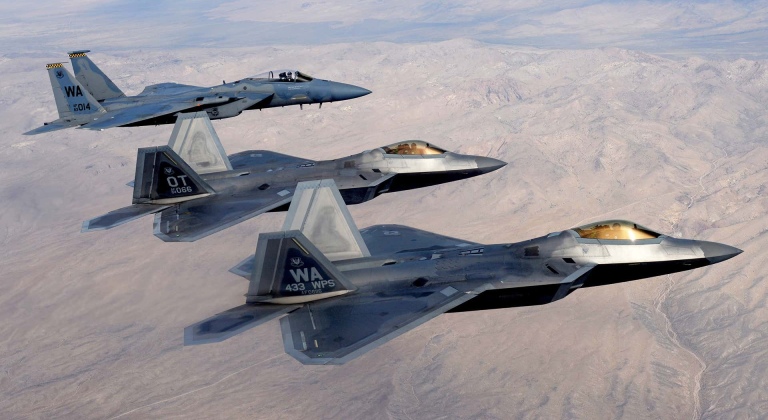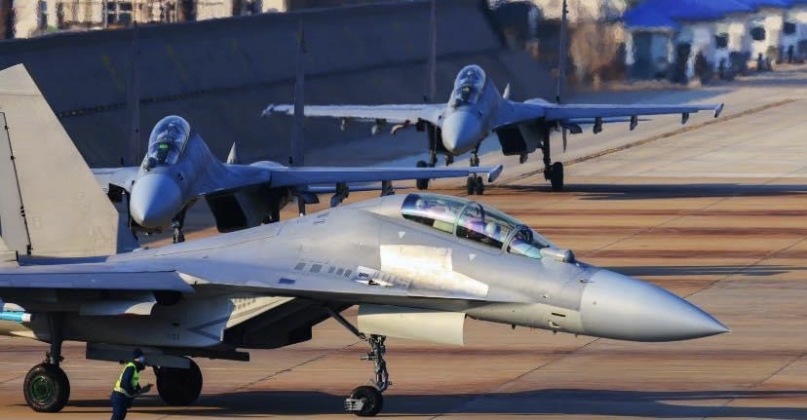News
F-22 Stealth Fighters Closely Intercepted and Repelled by Chinese J-16s
Pilots from the Chinese People’s Liberation Army Air Force have provided details on an incident in which J-16 fighters were deployed to intercept and expel two foreign stealth fighters near China’s coastal waters. Although the adversary fighter type was not stated specifically, the fact that the aircraft was reported by local media to be “of a type that has not appeared near the country’s coastal waters since,” and the common deployment of F-35s near Chinese territory, makes it highly likely that the aircraft in question were U.S. Air Force F-22s. The incident was recalled by pilot Li Chao, who noted that the foreign stealth fighter had “clear intentions … of intersecting and provoking us” and that they were “directly heading for our two aircraft”. “Our territorial waters are behind us, and they were approaching us, so we had to go over,” he added.

The J-16 and the foreign stealth fighter engaged in a series of manoeuvres, with Li recalling he managed to perform a barrel roll and fly inverted over one of the approaching aircraft, which placed his canopy was just 10 to 15 metres away. “After completing this manoeuvre, I locked onto both aircraft simultaneously and both [foreign jets] eventually left,” he added. Alongside the J-20 fifth generation fighter, the J-16 forms the backbone of the Chinese combat fleet with close to 400 aircraft in service. Although it lacks stealth capabilities as a fourth generation fighter, it has proven capable of holding its own against J-20s during exercises, and benefits from the integration of a radar widely assessed to be the most powerful of any fighter aircraft.

The F-22 is fielded in limited numbers by the U.S. Air Force, with approximately 180 in service. The fighter was developed from the 1980s as a dedicated air superiority platform, and while cutting edge when it first flew in 1990, saw its development protracted for over 15 years before belated service entry in December 2005. Significant issues with the design, in particular regarding its maintenance and very short range, resulted in production being terminated in 2011 before production had reached 25 percent of planned numbers. The F-22 has seen its air-to-air capabilities fall increasingly far behind not only newer fifth generation fighters such as the J-20 and F-35, but also some of the more capable fourth generation fighters such as the J-16 and F-15EX. The stealth aircraft’s lack of modern data links, ageing radar, and inability to engage targets at high off boresight angles, are among its most significant limitations that could leave it at a significant disadvantage against the J-16 and other modern fighters, particularly if engaging from within visual ranges.












